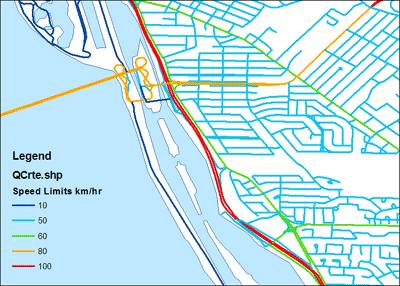
Download esri projection file - apologise, but
23.2.5. Raster projections¶
Input layer
[raster]
Input raster layer to reproject
Source CRS
Optional
[crs]
Defines the CRS of the input raster layer
Target CRS
Optional
[crs]
Default:
The CRS of the output layer
Resampling method to use
[enumeration]
Default: 0
Pixel value resampling method to use. Options:
0 — Nearest neighbour
1 — Bilinear
2 — Cubic
3 — Cubic spline
4 — Lanczos windowed sinc
5 — Average
6 — Mode
7 — Maximum
8 — Minimum
9 — Median
10 — First quartile
11 — Third quartile
Nodata value for output bands
Optional
[number]
Default: None
Sets nodata value for output bands. If not provided, then nodata values will be copied from the source dataset.
Output file resolution in target georeferenced units
Optional
[number]
Default: None
Defines the output file resolution of reprojection result
Additional creation options
Optional
[string]
Default: ‘’
For adding one or more creation options that control the raster to be created (colors, block size, file compression…). For convenience, you can rely on predefined profiles (see GDAL driver options section).
Output data type
[enumeration]
Default: 0
Defines the format of the output raster file.
Options:
0 — Use input layer data type
1 — Byte
2 — Int16
3 — UInt16
4 — UInt32
5 — Int32
6 — Float32
7 — Float64
8 — CInt16
9 — CInt32
10 — CFloat32
11 — CFloat64
Georeferenced extents of output file to be created
Optional
[extent]
Sets the georeferenced extent of the output file to be created (in the Target CRS by default. In the CRS of the target raster extent, if specified).
CRS of the target raster extent
Optional
[crs]
Specifies the CRS in which to interpret the coordinates given for the extent of the output file. This must not be confused with the target CRS of the output dataset. It is instead a convenience e.g. when knowing the output coordinates in a geodetic long/lat CRS, but wanting a result in a projected coordinate system.
Use multithreaded warping implementation
[boolean]
Default: False
Two threads will be used to process chunks of the image and perform input/output operations simultaneously. Note that the computation itself is not multithreaded.
Additional command-line parameters
Optional
[string]
Default: None
Add extra GDAL command line options.
Reprojected
[raster]
Default: ‘[Save to temporary file]’
Specification of the output raster layer. One of:
Save to a Temporary File
Save to File…
The file encoding can also be changed here.


-
-